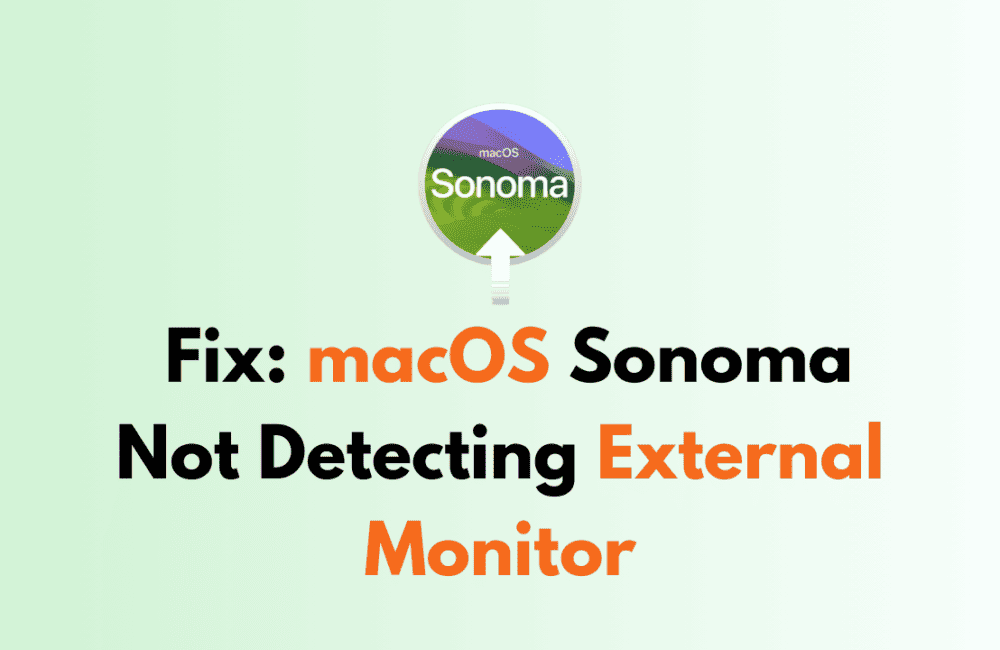Are you struggling with the frustrating issue of your macOS Sonoma not detecting your external monitor? You’re not alone.
Many users have reported this problem, which can be caused by a variety of factors, from outdated drivers to faulty cables.
But don’t worry, there are several solutions you can try to fix this issue and get your external monitor up and running again.
In this post, we’ll walk you through some of the most effective methods for troubleshooting and resolving this problem.

How To Fix MacOS Sonoma Not Detecting External Monitor
1. Check Your Cables And Connections
The first thing you should do is make sure your cables and connections are working properly.
- Turn off your Mac and unplug your cables from both your Mac and your external monitor.
- Check for any visible damage or wear on your cables.
- Plug your cables back in and ensure they are firmly connected.
2. Update Your MacOS
Make sure your macOS Sonoma is up to date.
- Click on the Apple menu in the top left corner of your screen.
- Select “System Preferences”.
- Click on “Software Update”.
- If an update is available, click “Update Now” and follow the on-screen instructions to download and install the update.
3. Restart Your Mac
Sometimes a simple restart can solve the problem. Try restarting your Mac and see if your external monitor is detected.
- Click on the Apple menu in the top left corner of your screen.
- Select “Restart”.
- Wait for your Mac to restart and check if your external monitor is detected.
4. Reset The SMC
Resetting the System Management Controller (SMC) can help resolve issues with hardware, including external monitors.
- Shut down your Mac.
- Press and hold the “Shift + Control + Option” keys on the left side of your keyboard, then press and hold the power button at the same time.
- Hold these keys and the power button for 10 seconds, then release them.
- Press the power button again to turn on your Mac.
5. Use DisplayLink Manager
If you have a DisplayLink adapter, try installing the DisplayLink Manager software. This can help your Mac detect external monitors that are connected through a DisplayLink adapter.
- Go to the DisplayLink website and download the DisplayLink Manager software.
- Install the software on your Mac.
- Connect your external monitor through the DisplayLink adapter and see if it is detected.
6. Try A Different Cable Or Adapter
If your cables or adapters are faulty, this can cause issues with detecting external monitors. Try using a different cable or adapter to see if this resolves the problem.
- If you have another cable or adapter available, try using it to connect your external monitor to your Mac.
- If your external monitor is detected with the new cable or adapter, then the issue is likely with your original cable or adapter.
7. Check Your Monitor Settings
Make sure your external monitor is set to the correct input and resolution. You can do this by going to System Preferences > Displays and selecting your external monitor.
- Click on the Apple menu in the top left corner of your screen.
- Select “System Preferences”.
- Click on “Displays”.
- Select your external monitor from the list of available displays.
- Ensure the input and resolution settings are correct for your external monitor.

